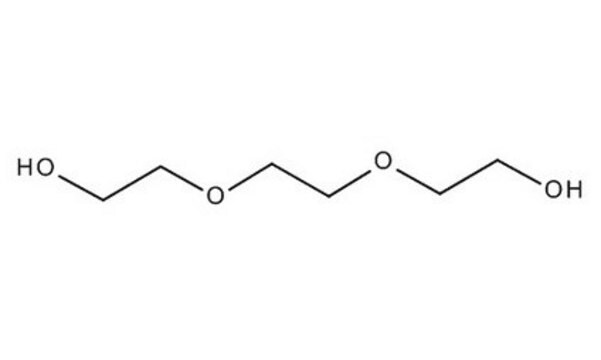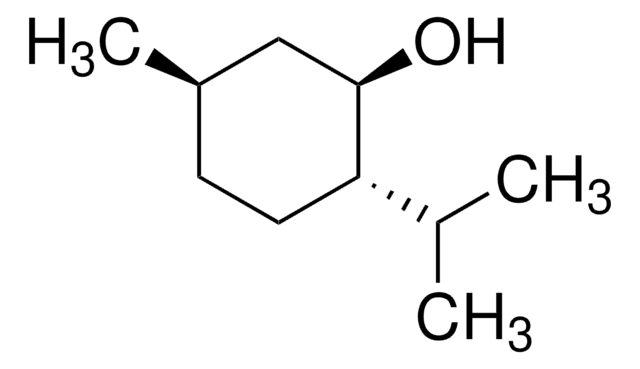32160
Diethylene glycol
puriss. p.a., ≥99.0% (GC), colorless
Sinónimos:
2,2′-Oxydiethanol, 2-Hydroxyethyl ether, Bis(2-hydroxyethyl) ether, Diglycol
About This Item
Productos recomendados
densidad de vapor
2.14 (vs air)
Nivel de calidad
presión de vapor
0.01 mmHg ( 20 °C)
descripción
non-ionic
grado
puriss. p.a.
Análisis
≥99.0% (GC)
formulario
viscous liquid (clear)
temp. de autoignición
442 °F
lim. expl.
2-12.3 %
impurezas
≤0.003% peroxides (as H2O2)
≤0.01% free acid (as CH3COOH)
≤0.1% water
≤0.8% ethylene glycol (HOCH2CH2OH)
color
colorless
APHA: ≤25
índice de refracción
n20/D 1.447 (lit.)
n20/D 1.447
bp
245 °C (lit.)
mp
−10 °C (lit.)
densidad
1.116 g/mL at 20 °C
1.118 g/mL at 25 °C (lit.)
trazas de catión
Ca: ≤5 mg/kg
Cd: ≤1 mg/kg
Co: ≤1 mg/kg
Cr: ≤1 mg/kg
Cu: ≤1 mg/kg
Fe: ≤2 mg/kg
K: ≤20 mg/kg
Mg: ≤1 mg/kg
Mn: ≤1 mg/kg
Na: ≤20 mg/kg
Ni: ≤1 mg/kg
Pb: ≤1 mg/kg
Zn: ≤10 mg/kg
cadena SMILES
OCCOCCO
InChI
1S/C4H10O3/c5-1-3-7-4-2-6/h5-6H,1-4H2
Clave InChI
MTHSVFCYNBDYFN-UHFFFAOYSA-N
¿Está buscando productos similares? Visita Guía de comparación de productos
Categorías relacionadas
Descripción general
Aplicación
Palabra de señalización
Warning
Frases de peligro
Consejos de prudencia
Clasificaciones de peligro
Acute Tox. 4 Oral
Código de clase de almacenamiento
10 - Combustible liquids
Clase de riesgo para el agua (WGK)
WGK 1
Punto de inflamabilidad (°F)
280.4 °F - closed cup
Punto de inflamabilidad (°C)
138 °C - closed cup
Equipo de protección personal
Eyeshields, Faceshields, Gloves, type ABEK (EN14387) respirator filter
Elija entre una de las versiones más recientes:
¿Ya tiene este producto?
Encuentre la documentación para los productos que ha comprado recientemente en la Biblioteca de documentos.
Los clientes también vieron
Nuestro equipo de científicos tiene experiencia en todas las áreas de investigación: Ciencias de la vida, Ciencia de los materiales, Síntesis química, Cromatografía, Analítica y muchas otras.
Póngase en contacto con el Servicio técnico






